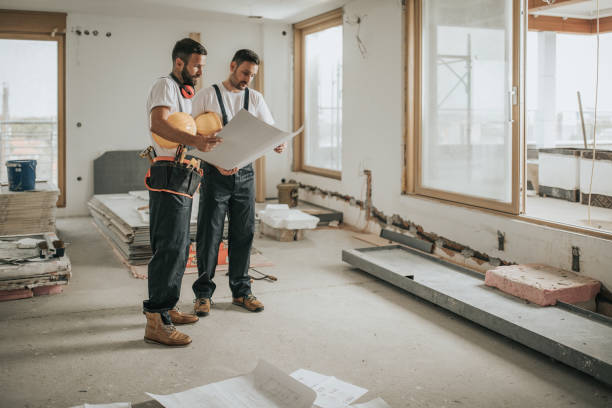Home Remodeling in India: Design Trends and Smart Upgrades for 2025
Home remodeling has become a strategic investment for Indian homeowners looking to enhance their living spaces without relocating. From modernizing outdated interiors to incorporating sustainable materials and smart technology, remodeling projects offer a practical way to increase property value, improve functionality, and align homes with contemporary lifestyle needs. As 2025 approaches, several design trends and upgrade options are reshaping how Indians think about transforming their homes.

The Indian real estate landscape is witnessing a significant shift as more homeowners choose to renovate existing properties rather than purchase new ones. Rising property prices, emotional attachment to family homes, and the desire for personalized living spaces are driving this transformation. Remodeling allows families to adapt their homes to changing needs while preserving memories and avoiding the hassles of relocation.
Why Home Remodeling Is Gaining Popularity Across India
Several factors contribute to the growing interest in home remodeling across Indian cities and towns. Urbanization has led to space constraints, prompting homeowners to maximize their existing square footage through smart design solutions. Additionally, the pandemic shifted perspectives on home environments, with people spending more time indoors and recognizing the need for comfortable, functional spaces. Tax benefits on home improvement loans and increased availability of skilled contractors have also made remodeling more accessible. Furthermore, the desire to incorporate energy-efficient features and modern amenities without the financial burden of buying new property makes renovation an attractive option for middle-class families.
How to Plan a Successful Home Remodeling Project
Proper planning is essential to ensure your remodeling project stays on budget and meets expectations. Begin by clearly defining your goals—whether you want to update aesthetics, improve functionality, or increase property value. Create a detailed budget that accounts for materials, labor, permits, and a contingency fund of at least 10-15 percent for unexpected expenses. Research and hire reputable contractors with verified credentials and positive reviews. Obtain multiple quotes and compare them carefully. Establish a realistic timeline, keeping in mind that delays can occur due to material availability or weather conditions. Communicate regularly with your contractor and document all agreements in writing. Finally, prioritize areas that offer the highest return on investment, such as kitchens, bathrooms, and living spaces.
Top Home Remodeling Trends in India (2025)
Indian homeowners are embracing several exciting design trends as 2025 approaches. Sustainable and eco-friendly materials like reclaimed wood, bamboo, and recycled tiles are gaining traction as environmental consciousness grows. Biophilic design, which incorporates natural elements like indoor plants and natural light, creates healthier living environments. Open-concept layouts that merge kitchens with dining and living areas remain popular, especially in urban apartments. Smart home technology integration, including automated lighting, climate control, and security systems, is becoming standard in modern remodels. Minimalist aesthetics with clean lines and neutral color palettes appeal to younger homeowners, while traditional Indian design elements like jali work and brass accents are being reimagined in contemporary contexts. Multipurpose spaces that can serve as home offices, guest rooms, or fitness areas reflect the evolving needs of Indian families.
Financing Options for Home Remodeling in India
Funding a remodeling project requires careful financial planning. Several financing options are available to Indian homeowners. Home improvement loans from banks and non-banking financial companies offer dedicated funding for renovation projects, with loan amounts typically ranging from ₹50,000 to ₹50 lakhs depending on the lender and borrower’s creditworthiness. Interest rates generally fall between 8.5 percent and 15 percent annually, with repayment tenures extending up to 15 years. Personal loans provide another option, though they often carry higher interest rates. Some homeowners opt to use credit cards for smaller projects, taking advantage of EMI conversion facilities. Top-up loans on existing home loans can offer lower interest rates for those with sufficient equity. Government schemes occasionally provide subsidies for energy-efficient upgrades or accessibility modifications. Before committing to any financing option, compare interest rates, processing fees, and prepayment penalties across multiple lenders.
| Financing Option | Typical Loan Amount | Estimated Interest Rate | Repayment Period |
|---|---|---|---|
| Home Improvement Loan | ₹50,000 - ₹50 lakhs | 8.5% - 15% p.a. | Up to 15 years |
| Personal Loan | ₹50,000 - ₹25 lakhs | 10% - 18% p.a. | Up to 7 years |
| Top-Up Home Loan | ₹1 lakh - ₹50 lakhs | 8% - 12% p.a. | Up to 15 years |
| Credit Card EMI | ₹10,000 - ₹5 lakhs | 12% - 24% p.a. | Up to 3 years |
Prices, rates, or cost estimates mentioned in this article are based on the latest available information but may change over time. Independent research is advised before making financial decisions.
Why Home Remodeling Adds Long-Term Value
Investing in home remodeling delivers benefits that extend far beyond aesthetic improvements. Updated homes command higher resale values, with well-executed kitchen and bathroom renovations typically offering the best return on investment. Energy-efficient upgrades like improved insulation, LED lighting, and solar panels reduce utility bills and appeal to environmentally conscious buyers. Modern amenities and updated infrastructure make homes more comfortable and functional for current residents while attracting future buyers. Remodeling also allows homeowners to address structural issues, preventing costly repairs down the line. Additionally, personalized spaces that reflect individual tastes and lifestyles enhance daily living experiences and emotional well-being. In rapidly developing Indian cities, maintaining and upgrading properties helps them remain competitive in the real estate market.
Home remodeling in India represents a practical and rewarding approach to enhancing living spaces. By staying informed about current trends, planning carefully, exploring appropriate financing options, and focusing on value-adding improvements, homeowners can transform their properties into modern, functional, and valuable assets. As design preferences evolve and technology advances, the opportunities for creative and impactful home transformations continue to expand across the country.




